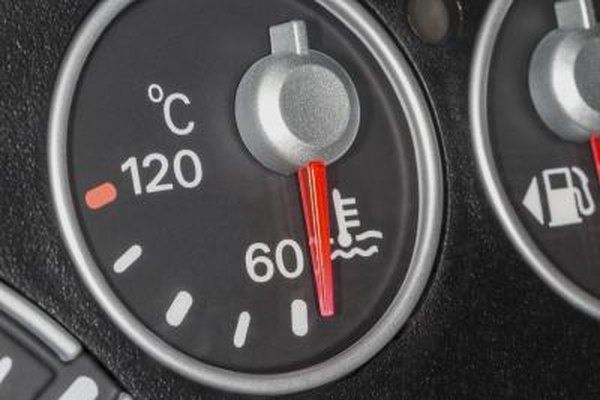How to Diagnose a Clogged Radiator
by Dale YalanovskyUpdated July 06, 2023
A car's radiator may look fine on the outside, but inside there could be big troubles. When a radiator gets clogged, the entire cooling system becomes compromised, and over time serious mechanical damage can happen to your vehicle. Knowing how to diagnose a clogged radiator will not only save you a lot of money on repair bills, it may save the life of your vehicle.
1. Start the car and allow it to run

Start the car and allow it to run. As it begins to warm up, feel the outside radiator fins with your hands. The entire radiator should heat up as hot radiator fluid passes along inside, but if you feel hot and cold spots on the fins, the fluid is not flowing correctly, and that means that the cooler areas have become clogged.
2. Remove the radiator cap on a cold car and start it up

Remove the radiator cap on a cold car and start it up. Grab the top radiator hose and squeeze it when it's under zero pressure to get a feel of what that's like. Replace the radiator cap, rev the engine to about 3000 RPM (this does not have to be exact, you just want to spool up the engine a bit here), then squeeze the radiator hose again. A clogged radiator will send all of the radiator fluid directly into the hose and make it very hard to squeeze.
3. Install a new thermostat and new hoses

Install a new thermostat and new hoses, and if the vehicle overheats with everything else functioning properly, the radiator is clogged up.
4. Pull off the radiator cap on a cold vehicle

Pull off the radiator cap on a cold vehicle. Turn your flashlight on and point it into the radiator while you peer inside. If the fluid looks like mud water or smells of rubber, or if the fins are corroded with white crusty deposits, your radiator is not functioning at 100% and is clogged.
Warning
Never open a radiator cap when the engine is warm. That can cause a serious accident, as the built-up pressure can turn a radiator cap into a flying missile.
Video showing clogged radiator symptoms:
Comments on this video:
- Partially blocked can be harder to diagnose it may also stop heat from locking up a viscous fan causing a secondary symptom. Check radiator is hot all over the face (turn engine off). If any cool areas then your radiator is partially blocked. Hot water cannot flow into those channels. You will find that whilst the middle channels are badly blocked, the channels at the inlet pipe and at the far end would still be open and allowing a reduced flow which does not have time to cool properly under loaded conditions such as going up steep hills but may still run properly under normal driving conditions.
- Thank you for the video. I'm here because someone put stop leak in my radiator. It's a new car and he claims its wonderful stuff. On my way to and back from work my car over heated. I got home and checked the engine. After hours I found the radiator outlet pipe was clogged so bad you would be lucky to put a wire through the pipe. I tried cleaning out the stop leak but it fused to the pipe and was incredibly strong and rubber like. I now need a new pipe and radiator. Rather pay extra for a job well done that skimp out and cost yourself a new engine.
Things You'll Need
- Flashlight
Warnings
- Never open a radiator cap when the engine is warm. That can cause a serious accident, as the built-up pressure can turn a radiator cap into a flying missile.
Writer Bio
Dale Yalanovsky has been writing professionally since 1978. He has been published in "Woman's Day," "New Home Journal" and on many do-it-yourself websites. He specializes in do-it-yourself projects, household and auto maintenance and property management. Yalanovsky also writes a bimonthly column that provides home improvement advice.







